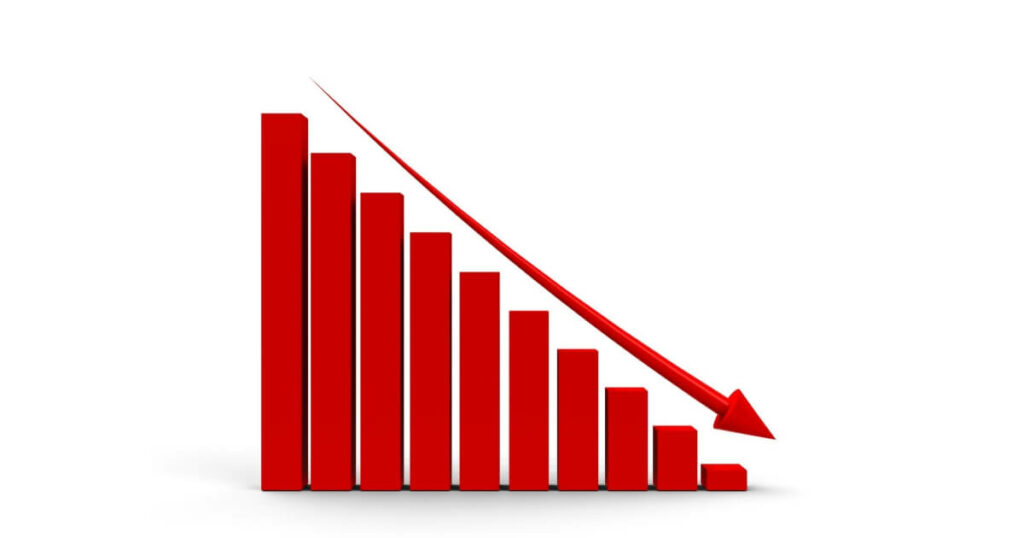When we think of the cost of the inventory, our focus tends to be only on the actual cost of the goods. But that only covers the tip of the iceberg, as the costing costs associated with that inventory can be anywhere from 20%-30% annually, according to an informative article on Investopedia. Understanding inventory costs starts with the basics – the expenses of buying and transporting goods to your storage or sales point. Yet, this is just a piece of the puzzle. Besides the evident costs like storage, insurance, and procurement, there are hidden expenses that often go unnoticed but can significantly impact a company’s finances and profitability.
After all, businesses are spending a substantial amount of money just to “hold” that inventory. For every $1 million in inventory, there is a cost of roughly two hundred and fifty thousand annually to maintain it, which is substantial. Let’s take a look at the hidden cost impacts and implications on finances, business strategy, employees, and customers.
How Hidden Cost Impacts Financial Performance

The financial implications of inventory management are far-reaching and often underestimated. Beyond the visible costs lie hidden expenses that can erode profitability. The following are the common implications.
Holding Costs
Holding costs encompass a wide range of expenses incurred while keeping inventory on hand. These include warehousing expenses, security measures, climate control, and utilities. It’s not just the physical space that costs money; it’s also the necessary infrastructure to maintain and protect your inventory.
Opportunity Costs
Inventory ties up capital that could be used elsewhere in your business. This capital could be invested in growth opportunities or used to pay down debt. When funds are tied up in inventory, businesses may miss out on profitable investments or may need to borrow money, incurring interest expenses.
Obsolescence Costs
Products or materials become obsolete over time due to changes in technology, market preferences, or regulations. Businesses often fail to account for the costs associated with disposing of outdated inventory or liquidating inventory at a loss. Obsolescence can also lead to storage costs for items that aren’t moving.
Carrying Costs
Carrying costs include costs associated with managing inventory, such as labor expenses, software systems, inventory control measures, and insurance. These costs can add up significantly but are often overlooked when calculating inventory expenses.
Pilferage and Shrinkage
Inventory shrinkage refers to the loss of inventory due to theft, damage, or spoilage. Businesses might not be aware of the true extent of these losses, which can erode profits over time. Implementing security measures and inventory control systems can help reduce these hidden costs.
Stockouts and Overstocking
Maintaining the right balance of inventory is a constant challenge. Stockouts can result in lost sales and dissatisfied customers, while overstocking ties up funds and leads to additional storage costs. Striking the right balance requires accurate demand forecasting and inventory management.
Transportation Costs

The cost of transporting inventory to and from warehouses or suppliers can be substantial. Fuel, shipping fees, and vehicle maintenance expenses should all be factored in when considering the true cost of inventory.
Quality Control
Ensuring the quality of inventory items may involve additional costs, such as inspections, quality control personnel, and compliance with industry standards. Poor quality can lead to product returns, warranty claims, and customer dissatisfaction.
Regulatory Compliance
Meeting regulatory requirements for certain types of inventory, such as hazardous materials or controlled substances, can be costly. Businesses may need to invest in specialized storage facilities, documentation, and compliance procedures to avoid legal issues and fines.
Space Optimization
Inefficient use of storage space can lead to higher costs. Businesses might overlook the potential for optimizing their warehouse layout or using vertical storage solutions, which can save space and reduce costs.
Want to know the value of your inventory?
Excess Inventory’s Hidden Cost Impact on Business Strategy
Now that we’ve covered some of the most obvious costs that nearly every inventory-centric business faces, let’s take a closer look at the hidden ones. This is where too much or slow-moving inventory can hurt a business. It’s crucial to identify and address these hidden costs to maintain profitability and competitiveness.
Reduced Agility
Excess inventory can make a business less agile and responsive to market changes. It can hinder the company’s ability to quickly adapt to shifting customer preferences or emerging trends. And this makes sense. All businesses have a fixed amount of capital and warehouse space, so if too much is taken up by inventory that is not selling well, that leaves fewer resources for better products.
Customer Dissatisfaction
If customers see the same products they’re not interested in over and over again, they may become dissatisfied. It’s often the new and exciting products that bring customers in more frequently. This dissatisfaction can damage your brand’s reputation and hurt customer loyalty.
Brand Dilution
Maintaining excessive inventory might require running clearance sales or offering discounts, which can devalue the brand perception. Customers may start associating the brand with discounted or lower-quality products.
Loss of Innovation Focus
When a company is preoccupied with managing excess inventory, it may divert attention and resources away from innovation and new product development, potentially losing its competitive edge.
Employee Frustration

Employees tasked with managing and selling excess inventory may become frustrated and unmotivated. They may feel their skills and talents are underutilized, affecting morale and potentially leading to turnover. We will get to this in more detail later on. This creates a lot of tension and pointing fingers within the organization.
Wasted Marketing Efforts
Marketing campaigns and resources directed toward promoting excess inventory may not yield the desired results. This can lead to a sense of inefficiency among marketing teams.
Opportunity Cost
Funds tied up in excess inventory could be invested in strategic initiatives, market research, or expansion efforts. The missed opportunities for growth and innovation represent an intangible cost.
Environmental Impact
Excess inventory may lead to waste and disposal issues, contributing to environmental concerns. Sustainable practices and reducing waste are increasingly important for a business’s reputation.
Strained Vendor Relationships
If businesses consistently overorder from suppliers, it can strain relationships with those suppliers. This can result in less favorable terms, delayed deliveries, or difficulties in sourcing critical items.
Complexity and Overhead
Managing a large inventory requires complex systems and processes. The intangible cost here is the added complexity and overhead in daily operations, potentially leading to inefficiencies and employee stress.
Market Perception
The presence of excess inventory can send signals to investors and competitors about a company’s financial health and market demand. A surplus inventory can raise concerns about poor financial management.
Depreciation of Assets
Over time, excess inventory can depreciate, and this decline may not be immediately apparent. This can affect the company’s overall asset valuation.
Hidden Cost Impact: How Slow-Moving Inventory Affects Employee Morale and Productivity
Let’s shift our attention to the internal ramifications of sluggish inventory turnover and the interplay between management and employees, particularly sales executives. The drive to move inventory can be intense, and when expectations aren’t met, it can generate internal friction. Let’s delve into various ways in which slow-moving inventory can affect sales.
Sales Targets and Compensation
Sales teams are typically incentivized through sales targets and commissions. Selling unwanted or slow-moving inventory can be challenging, as it may not contribute significantly to meeting those targets. This can lead to frustration, especially if commissions are tied to achieving specific sales goals.
Loss of Sales Opportunities

Time and effort spent on selling unwanted inventory could be better utilized by pursuing leads for products that customers are actively seeking. This misallocation of resources can lead to missed sales opportunities and revenue.
Impact on Personal Reputation
Sales professionals often take pride in their ability to provide valuable solutions to customers. Being forced to sell unwanted inventory can tarnish their professional reputation and make them feel that they are not adding value to their clients.
Lower Job Satisfaction
Frustration stemming from selling unwanted inventory can result in lower job satisfaction and decreased motivation among sales team members. This, in turn, can affect their overall performance and enthusiasm for their roles.
Limited Skill Utilization
Sales teams may have specialized skills and knowledge related to specific products or industries. Selling surplus inventory outside their expertise can make them feel underutilized and undervalued.
Difficulty Meeting Sales Goals
When the majority of a salesperson’s efforts are directed toward moving unwanted inventory, it can be challenging to meet sales goals and quotas. This can create stress and job insecurity.
Burnout
Constantly dealing with the frustration of selling inventory nobody wants can lead to burnout among sales team members. This emotional exhaustion can have long-term negative consequences for both the individual and the organization.
Incentive Misalignment
Sales teams may see a misalignment between their incentives and the company’s goals. If their compensation is tied to selling excess inventory, they may feel that their efforts are not aligned with the company’s success.
How the Absence of New Products Affects Customers
Now, let’s shift our focus to how low inventory turnover impacts the customer experience. When capital and warehouse space are tied up with slow-moving inventory, customers encounter the same products repeatedly. It’s the introduction of new and enticing products that entice customers to return. While many of these effects may seem intuitive, it’s worth discussing them nonetheless
Stagnation
A lack of new products can lead to a stagnant product offering, which may become less appealing to customers over time. This can result in declining sales and market share.
Missed Opportunities
Failing to introduce new products means missing out on opportunities to cater to changing customer preferences, emerging trends, and evolving market dynamics.
Loss of Competitive Edge
In dynamic markets, competitors who regularly introduce new goods can gain a competitive edge. A retailer that doesn’t keep up with innovation may lose customers to more innovative rivals.
Customer Attrition

Customers who seek variety and novelty in their shopping experience may grow disinterested and turn to competitors with more exciting product offerings.
Market Saturation
Over time, a retailer’s product lineup may become saturated, meaning they’ve captured the majority of potential customers. Without new products to attract different market segments, growth opportunities may be limited.
Diminished Brand Relevance
A retailer may be perceived as outdated or irrelevant if they don’t adapt to changing consumer preferences and trends. This can harm their brand image.
Risk Aversion
By not introducing new products, a retailer may become overly risk-averse. While this can mitigate certain risks, it can also restrain innovation and agility in response to market shifts.
Conclusion
In conclusion, the impact of hidden costs and slow-moving inventory is multi-faceted and touches every aspect of a business. To mitigate its negative effects, companies must implement effective inventory management strategies, regularly review their product portfolios, and maintain a keen focus on customer demand.
Overstock Trader, a leading inventory optimization solution, can help navigate these challenges by providing data-driven insights and actionable recommendations to help businesses sell inventory.
Frequently Asked Questions
How can efficient inventory management techniques help reduce holding costs and excess inventory?
Efficient inventory management techniques can significantly lower costs associated with excessive stock levels. By optimizing surplus inventory levels and turnover ratios, companies can reduce the capital cost of financing large amounts of inventory. Additionally, these techniques minimize indirect costs, such as warehousing expenses and the risk of inventory obsolescence, leading to a lower overall cost of goods sold.
What are the consequences of not managing inventory efficiently in a supply chain?
Inefficient inventory management in a supply chain can lead to several negative consequences. It can result in excess inventory that cannot be sold, increasing capital costs and tying up valuable resources. It may also lead to stockouts, lost sales, and missed revenue opportunities. Moreover, it can impact the overall cost of goods sold and erode profit margins. Therefore, efficient inventory management is essential to ensure the smooth operation of a supply chain and maintain competitiveness in the market.
How can a high inventory turnover ratio affect the overall cost of carrying inventory?
A high inventory turnover ratio indicates that inventory is moving quickly, which can positively impact the overall cost of carrying inventory. It reduces the capital cost associated with financing large inventory amounts, decreases storage expenses, and lowers the risk of obsolescence. Companies with a high turnover ratio often enjoy improved cash flow and increased profitability due to efficient inventory management techniques, allowing them to allocate resources more effectively.

